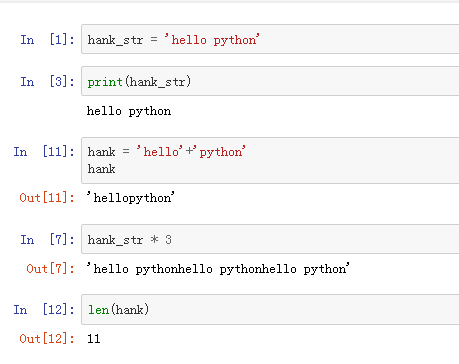java并发面试常识之ArrayBlockingQueue
ArrayBlockingQueue是常用的线程集合,在线程池中也常常被当做任务队列来使用。使用频率特别高。他是维护的是一个循环队列(基于数组实现),循环结构在数据结构中比较常见,但是在源码实现中还是比较少见的。
线程安全的实现
线程安全队列,基本是离不开锁的。ArrayBlockingQueue使用的是ReentrantLock,配合两种Condition,实现了集合的线程安全操作。这里稍微说一个好习惯,下面是成员变量的声明。
private static final long serialVersionUID = -817911632652898426L;
final Object[] items;
int takeIndex;
int putIndex;
int count;
final ReentrantLock lock;
private final Condition notEmpty;
private final Condition notFull;
transient Itrs itrs = null;
赋值的操作基本都是在构造函数里做的。这样有个好处,代码执行可控。成员变量的初始化也是会合并在构造方法里执行的,但是在执行顺序上需要好好斟酌,如果写在构造方法里初始化,则没有相关问题。
阻塞队列的常用场所就是生产者消费者。一般都是生产者放入,消费者从头取数据。下面重点说这两个操作。
这两个操作都是依靠锁来保证线程安全的。
生产操作
public void put(E e) throws InterruptedException {
checkNotNull(e);
final ReentrantLock lock = this.lock;
lock.lockInterruptibly();
try {
while (count == items.length)
notFull.await();
enqueue(e);
} finally {
lock.unlock();
}
}
put等放入操作,首先是获取锁,如果发现数据满了,就通过notFull的condition,来阻塞线程。这里的条件判定一定是用while而不是if,多线程情况下,可以被唤醒后发现又满了。
private void enqueue(E x) {
final Object[] items = this.items;
items[putIndex] = x;
if (++putIndex == items.length)
putIndex = 0;
count++;
notEmpty.signal();
}
这个是入队列的操作。首先获取维护的数组。putindex就是放入操作的标志。这个操作会一直加。达到预定的长度后就变成0从头开始计数。这样插入的操作就是一个循环的操作了,count就是用来做计数的,作为能否插入数据的一个标准,插入数据后就通过notEmpty的condition发出一个信号唤醒消费线程。
消费操作
public E take() throws InterruptedException {
final ReentrantLock lock = this.lock;
lock.lockInterruptibly();
try {
while (count == 0)
notEmpty.await();
return dequeue();
} finally {
lock.unlock();
}
}
消费的方法也是这样。先获取锁,然后进行条件判断,如果没有数据,则阻塞线程。注意点和put一样。
private E dequeue() {
final Object[] items = this.items;
@SuppressWarnings("unchecked")
E x = (E) items[takeIndex];
items[takeIndex] = null;
if (++takeIndex == items.length)
takeIndex = 0;
count--;
if (itrs != null)
itrs.elementDequeued();
notFull.signal();
return x;
}
取数据的时候,也依靠takeIndex,这是一个标志,这个数值也会一直增加,表示取的第一个数据的位置。如果这个标志走到最后,然后变成0,从头再来。这样保证取出的数据都是fifo的顺序。删除的时候如果发现迭代中,则会修改迭代器的遍历。然后通过notFull的condition来唤醒生产线程。
移除操作
public boolean remove(Object o) {
if (o == null) return false;
final Object[] items = this.items;
final ReentrantLock lock = this.lock;
lock.lock();
try {
if (count > 0) {
final int putIndex = this.putIndex;
int i = takeIndex;
do {
if (o.equals(items[i])) {
removeAt(i);
return true;
}
if (++i == items.length)
i = 0;
} while (i != putIndex);
}
return false;
} finally {
lock.unlock();
}
}
对于remove操作就比较麻烦了,首先获取锁之后,把两个标志位本地化,然后找到要删除的元素的位置。调用removeAt,这里删除需要对标志位做改变。
void removeAt(final int removeIndex) {
final Object[] items = this.items;
if (removeIndex == takeIndex) {
items[takeIndex] = null;
if (++takeIndex == items.length)
takeIndex = 0;
count--;
if (itrs != null)
itrs.elementDequeued();
} else {
final int putIndex = this.putIndex;
for (int i = removeIndex;;) {
int next = i + 1;
if (next == items.length)
next = 0;
if (next != putIndex) {
items[i] = items[next];
i = next;
} else {
items[i] = null;
this.putIndex = i;
break;
}
}
count--;
if (itrs != null)
itrs.removedAt(removeIndex);
}
notFull.signal();
}
如果删除的元素是位置和takeindex一样。那就可以直接删除,然后让删除标志位向后移动。如果不是,则从删除的位置开始,进行后面向前面的数据覆盖的操作。直到遇到putindex的前一个位置。然后把那个位置的数据设置为null。并且把putindex的位置往前移动一格,正在迭代的时候要删除数据并且唤醒生产线程。






